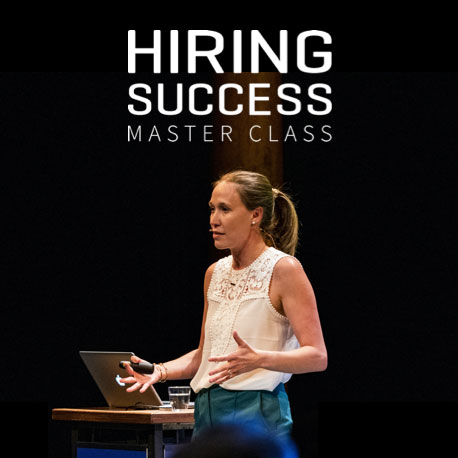Effective selection programs not only enable better hiring decisions, but they also streamline the talent acquisition (TA) process, thereby driving both Hiring Velocity and Net Hiring Score.
When it comes to talent attraction of remote employees, employers need to be aware of key competencies and behaviors that science shows are important for individuals’ success when working remotely. When it comes to building a robust remote TA strategy organizations should couple comprehensive candidate assessment and evaluation criteria with individual, team, and organizational predictive, performance metrics.
Qualities of Successful Remote Employees
Simply put, the nature of remote work is just different from onsite or in-office work. For those of us who have recently experienced the transition, it may have felt a bit…jarring. Even after weeks or months, some people still feel less productive and don’t like remote work, while others thrive and come to prefer it. So, what is it exactly that makes remote work different, and what are the implications for how we should hire?
Research in Psychology provides insight into the unique challenges of remote work and the competencies that people need to adapt and overcome these challenges 1. These remote work competencies are important for the long-term success of anyone who is working remotely. Broadly, the behaviors associated with success in remote work are related to:
- Work Relationships – How people develop and maintain relationships requires different behaviors when they are remote 2. In addition, how people seek and share information, and how effectively they use technology to communicate, impacts their success working remotely3.
- Work Habits – Remote work from home offices usually lacks the structure of office work and has more potential distractions. To be productive, remote workers need to be able to work autonomously 4, keeping themselves on task for long durations without much supervision.
- Self-Development and Well-Being – Remote work can leave workers feeling less supported by the organization, both day-to-day and in their careers. People need to be more proactive in seeking help, feedback, and opportunities, so taking initiative is important for success as a virtual team member5.
In summary, when hiring for remote roles, the science suggests that people who have better virtual social skills, better self-management skills, and more initiative will be more likely to succeed long-term.
Taking these characteristics into consideration along with specific strategies within the pillars of Hiring Success, employers can build a recruiting strategy to build a robust, remote workforce.

Talent Attraction and Engagement
A modern TA strategy that effectively recruits remotely consists of a mobile-first approach coupled with a seamless brand and experience integrated into the recruiting workflow.
A mobile-ready application process is table-stakes for any high-volume hiring program. Mobile access is important because increasingly many candidates only access the internet through their phones. These days, though, mobile-first candidate assessment and engagement apps provide superior user experience, due to reimagined interactive product designs that simply weren’t possible even a few years ago.
UX redesign resulted in 38% faster assessment completion times…
A well-designed candidate experience minimizes friction and cognitive effort, using shortcuts like social sign-on (e.g., letting candidates register using their social media account credentials). In talent assessment, in a recent project, our R&D team saw a reduced cognitive effort from mobile-first UX redesign that resulted in 38% faster assessment completion times… for the same number of questions!
Collaboration and Selection
When it comes to assessing candidates through the hiring funnel, evaluating candidates across different criteria is paramount, and there are a number of strategies that organizations can employ.
Research shows that candidates judge the fairness of the selection process based on how job-related they perceive the assessments to be…
Research shows that candidates judge the fairness of the selection process based on how job-related they perceive the assessments to be, and whether they felt that they had an opportunity to demonstrate their skills. Employers who use fair, job-related assessments earn more favorable candidate impressions and see better recruiting outcomes, such as higher offer-acceptance and on-the-job retention.
Assessment for remote work competencies should leverage online reporting at different levels of analysis to facilitate candidate evaluation and decision-making throughout the recruitment process. Through a secure, permission-based, online platform, recruiters and hiring managers get insight into candidates’ competencies to support their teams’ decisions on who to call first, who to advance to interviews, and ultimately who to hire.
Group reporting shows candidates in the context of the applicant pool, where they are all compared with the same objective measures against the same large-sample benchmarks. This kind of reporting is useful for prioritizing recruiting and hiring teams’ time on top talent, such as candidates with the highest remote work potential.
Individual-level reporting provides more narrative detail, including predicted behaviors and outcomes based on the candidates’ assessment responses. These reports are designed for deeper insights into relative strengths and development opportunities, to identify areas for potential follow up in interviews or onboarding, and to help assess fit.
Management and Operating Model
If you want to scientifically assess remote work competencies you want to choose an assessment partner that can support your TA strategy. Depending on the size of your organization and the volume and sophistication of your TA programs, you may need to consider your assessment partner’s ability to support: a global implementation, large volumes of applicants, multiple languages, compliance with GDPR and other data privacy regulations, technology integrations, and of course stakeholder buy-in and internal user acceptance of the partner and the tools and the experience.
Continuous evaluation of your strategy and infrastructure enables optimization of the program over time. With outcome data such as Net Hiring Score, you can ascertain which specific competencies and characteristics are particularly predictive in your organization’s ability to hire the best fit employees. These learnings inform how the assessment data are combined and used moving forward to enable even better hiring decisions.
Closing thoughts
In summary, remote work requires unique competencies. With an engaging, integrated, experience for candidates coupled with a robust infrastructure of assessments, evaluations, and metrics, businesses can bring together the best science and technology to help individuals and organizations make better career decisions.
Footnotes
- SHL (2020). RemoteWorkQ Technical Manual. Thames Ditton, UK: SHL.
- Wang, Y., & Haggerty, N. (2011). Individual Virtual Competence and Its Influence on Work Outcomes. Journal of Management Information Systems, 27(4), 299–334.
- Makarius, E. E., & Larson, B. Z. (2017). Changing the Perspective of Virtual Work: Building Virtual Intelligence at the Individual Level. Academy of Management Perspectives, 31(2), 159–178.
- Charalampous, M., Grant, C. A., Tramontano, C., & Michailidis, E. (2019). Systematically reviewing remote e-workers’ well-being at work: a multidimensional approach. European Journal of Work & Organizational Psychology, 28(1), 51–73.
- Krumm, S., Kanthak, J., Hartmann, K., & Hertel, G. (2016). What does it take to be a virtual team player? The knowledge, skills, abilities, and other characteristics required in virtual teams. Human Performance, 29(2), 123–142.

 Enroll in the Master Class & earn 6 SHRM credits
Enroll in the Master Class & earn 6 SHRM credits